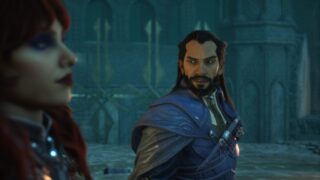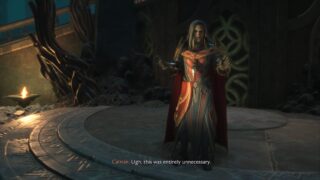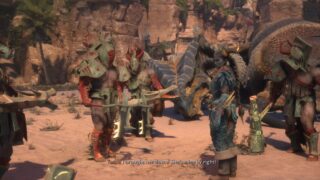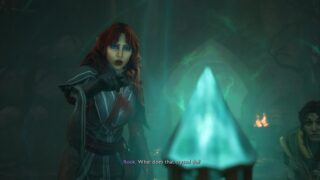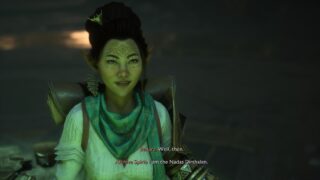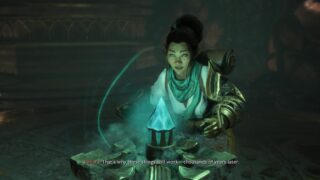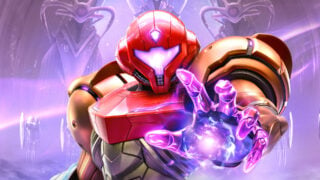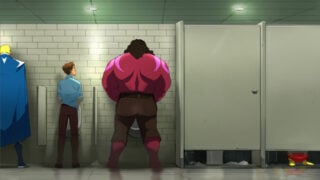Dragon Age: The Veilguard has strong characters, but gameplay stuck in the past
BioWare’s latest RPG feels like it doesn’t take enough gameplay risks
- Game Director
- Corinne Busche
- Key Credits
- Gary McKay (Executive Producer), John Epler (Creative Director)

Dragon Age: The Veilguard fleetingly captures BioWare magic, but just as often as it does this, it also disappoints with repetitive gameplay plagued with annoyances. While BioWare nails what it does best, like the excellent cast of characters and their interpersonal relationships, from a gameplay perspective, it too often feels frustratingly stuck in the past.
Set after 2014’s Dragon Age: Inquisition, the game follows Rook as they deal with the fallout of stopping the plans of Solas, The Dreadwolf. After accidentally releasing two evil gods into the world, Rook must assemble a team to defeat them and rid the world of Blight, a toxic, cancerous sludge that is slowly taking over the world.
Unfortunately, Veilguard’s main missions make for an uneven experience, swinging from incredible set pieces to frustrating slogs. Much of the game is spent destroying red balls of Blight that block your path or moving shiny cubes five steps away to open a door. We found our shoulders slumping every time we entered an area to find another roadblock that was solved by literally just following a red line.
This is part of an overall lack of variety throughout the game. You’re only ever fighting around three or four enemy types, so fights eventually become overly familiar. Combat itself can be fun, but we found that most enemies had far too much health. The issue isn’t that they’re particularly difficult (they barely do much damage), it’s more that the amount of time it takes to kill them means that the real battle is keeping your attention from wandering.
Thankfully, there’s at least a high variety of attacks, and your companions can also use their abilities to tag-team against larger foes. For example, if our character was to use a necrosis effect on an enemy, some companions can then use a fire attack to detonate that enemy. Controlling the attacks of the other two members of your party is convenient, and we very rarely felt the need to pause the action.
Elsewhere, Veilguard moves on from the open-world approach to a hub-and-spoke design, not unlike God of War: Ragnarok. In practice, that means that instead of natural connective tissue making the world feel like one organic place, you’re moving from city to city via the Crossroads, a dimension-hopping walkway, essentially.
On the one hand, we can see how making individual locations that don’t have to be linked by a physical space probably helped shave some production time off the game, but there’s a disconnect that means the world doesn’t feel cohesive. We felt very little sense of where we were at any time.
This contradiction extends to the areas where combat takes place versus the parts where players meet characters and explore. It’s that old cliche of knowing you’re entering a boss room because it’s a wide expanse with health packs, applied to the whole game. It’s like there’s the RPG side, which includes highly detailed, if stiff, towns and cities, and then you enter the video game part where the fighting happens.
This is dreadfully evident in Docktown, one of the game’s main cities, where there are always enemies on the exact same street, every time you visit it. They stand there, you batter them senseless, and then move on. The NPCs in the building that look directly onto this street of never-ending chaos never move a muscle.
BioWare had this issue 15 years ago when every Mass Effect combat zone was made as obvious as possible, thanks to the chest-high walls everywhere. For it still to be such an issue now is disappointing. That’s key to a lot of our problems with Dragon Age: The Veilguard. Its annoyances were forgiven 15 years ago, but just don’t pass muster in 2024.
The towns and cities themselves, while beautiful, feel stilted. Beyond the strange lack of reaction from NPCs to everything you do, there’s also an artifice to the towns themselves. There are bounty boards absolutely everywhere, but you can’t interact with them. You can smash the place to bits and not one resident, nor guard, cares.
“BioWare had this issue 15 years ago when every Mass Effect combat zone was made as obvious as possible, thanks to the chest-high walls everywhere. For it still to be such an issue now is disappointing.”
It’s an almost creepy lifelessness. None of these characters actually have things to do, they’re all just standing rooted to this spot forever. Whereas games like Dragon’s Dogma 2 create an illusion that characters have lives of their own divorced from your exploits, the towns in Dragon Age are populated by human-shaped set dressing.
Despite the often rigid nature of its world, Veilguard does at least set a high bar visually, and this helps to sell the social fantasy of Dragon Age, which for many players is the reason they’re here. The character creator is surely one of the best in an RPG. While it’s possible to make a character look horrific, the created character we settled on fit seamlessly into cutscenes.
Overall, the game’s social aspect is just about what you’d expect from BioWare. The dialogue between romantic interests is well-written and strays far enough away from the “press X to sleep with” parody. This is aided by a strong cast of companions, BioWare’s best since Mass Effect. The diversity of goals, origins, personal issues, and personalities makes it a very strong ensemble cast without becoming cliche.

How each character reacts to your actions can often be surprising, which is a nice way of exploring their complex personalities. You’ll also often be forced to make decisions that won’t sit right with multiple members of your crew. Instead of throwing them into a massive huff, no longer willing to speak to you, there’s more nuance to it. It’s possible to disagree or be annoyed with someone you respect without going crazy and burning down the Lighthouse.
Each team member also gets a side mission, which slows down the pace and lets you learn more about them. These are almost uniformly great, at least from a writing perspective, and serve as windows into a much better version of The Veilguard that could exist.
Within the modern action RPG space, Dragon Age: The Veilguard feels fine. It’s a game that is never overtly bad, but it’s also only ever very fleetingly amazing. We particularly enjoyed its cast, but the majority of things you’re asked to do with them are disappointingly repetitive. There are moments of spectacle, and longer main missions that show potential, but overall we were left feeling like BioWare hasn’t evolved with the times.
Dragon Age: The Veilguard feels like BioWare playing it too safe. While it nails what it does best, like the excellent cast and interpersonal relationships, from a gameplay perspective it feels out of date.
- Excellent cast
- Great visuals
- Best-in-class character creation
- Dull mission design
- Lifeless world
- Simple puzzles





